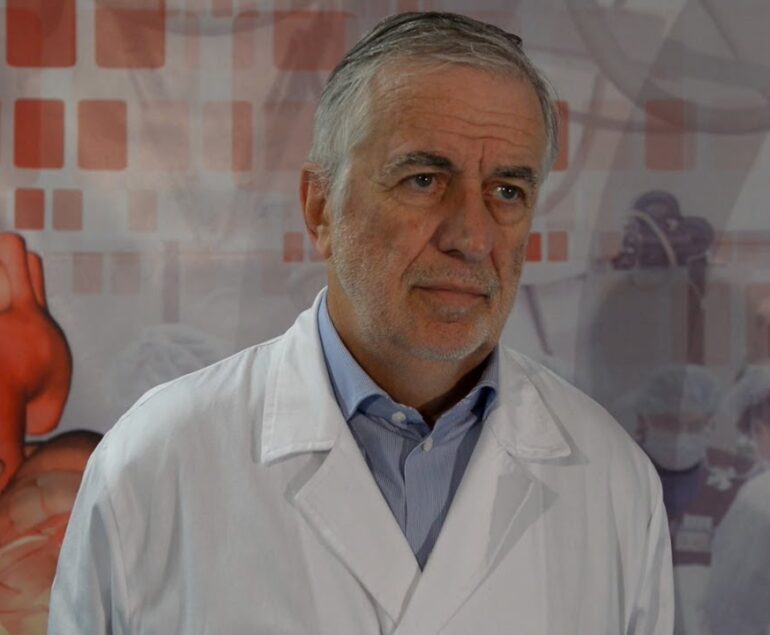Prof. Paolo Della Bella, Director of the Centre for Aritmology of the San Raffaele University Hospital in Milan, known for the clinical view of the problem of cardiac arrhythmias and organisational aspects between doctors and specialised anti-archaemic centres, considers it essential to be clear in a field often underestimated by the practical doctor and thus by the person involved or even overestimated. For example, in the case of abduction, ignoring that it is an exceedance of pharmacology, or in the defibrillator (ICD) where survival is all the greater the less the defibrillator, thanks to the contribution of other associated therapeutic measures (antiarchaemic, abduction, etc.).
The patient’s lifestyle, mental and neurovegetative balance in a harmonious ethical and economic context are always of great importance.
“The battler at night”,is a wake-up call to tell us that something is perhaps changing in our lives. Giuseppe Pontiggia in the Giardino delle Esperidi
Interview with Prof. Paolo Della Bella
By Giuseppe Riggio and Eros Barantani
Night-time arrhythmia is often the first warning call of atrial fibrillation.
At the age of 50 there is a high risk of heart failure and embolia, and perhaps no abduction is needed, but there is a need to think about a “conscientious campaign” and to assess the pathology underlying the arthaemia. Therefore, clinical monitoring (arterial hypertension, obesity, etc.), ecography, Holter with small implantable devices to choose between pharmacological therapy or abduction. Frequent episodes of atrial fibrillation in healthy heart must give us thought to a pathology of the atrio (atrial myocardiopathy), facilitated by the underestimation of arthaemia and by having ignored abduction.
It is necessary to be aware that there are arthmias linked to concurrent factors such as high degree obesity and it is useful to organise a weight control clinic in collaboration with cardiologists’ colleagues.
We know that it is rare (in 5 % of cases) to encourage a dysfunction of the left ventricol, in any case the high frequency of an extrasistolia is poorly tolerated and the detection of an aritmic outbreak by means of an electrophysiological study and appropriate mapping is the most appropriate methodology to prevent major alterations.
At an early stage, ethnicological treatment is important and myocardial biopsy and then immunosoppressive or antiviral treatment should be preferred; the decision is interdisciplinary as a neglected myocarditis becomes dilatative myocardiopathy. It is important to connect with the Padova and Trieste group for a common, multidisciplinary route with aritmologists, electrophysiologists, cardiologi-surgeons for atrial fibrillation, with the aim of personalised treatment such as at the San Raffaele.
Preference in these contexts is to treatment with abduction, which in 80/85 % of cases exceeds any other heart therapy, thus avoiding drug addiction; if the patient has already followed other treatments, the word goes to the technique. When symptoms occur, an electrophysiological study, mapping, abduction should be used. In severe ventricular tachicardie, there are data documenting negative inotropic effects of medicines: CORDARONE in functional class II is useful, in functional class III increases mortality, but has been forced to interrupt the first year in 18 % of cases due to serious problems with hypertyroidism, pulmonary fibrosis; in such cases, there is an indication of the defibrillator’s implantation to solve the sudden death problem. There are no other therapies with such a dramatic impact, but the defibrillator if several times increases mortality, worsens survival; if the applicable strategies increase, they should be followed. The overlap of pharmacological treatment with the defibrillator reduces the number of shocks, the betablocant reduces it by 50 % and the defibrillator, born as a shock box, now has tools to recognise slower ventricular tachicardie and intervene at various frequencies: with frequencies above 200, the number of shocks is reduced so as to support the regression of the arthaemia in a few seconds. Abduction may be used at the same time as or after the defibrillator planting and, in the latter case, the abduction is not followed by increased mortality.
– do not underestimate atrial fibrillation, regardless of ethology, for the damage it causes, in particular celebral damage (cognitive deficit);
– not underestimate the abduction seen as a priority therapy tool over pharmacological therapy;
– do not consider the defibrillator (ICD) to be the solution of severe ventricular arrhythmies due to the positive role of pharmacological association and abduction that avoid damage caused by frequent defibrillator interventions.


